Did you know that not all raw fish at your favorite Japanese restaurant is sushi? Understanding the difference between sashimi and all the different types of sushi can help you place your next order like a pro!
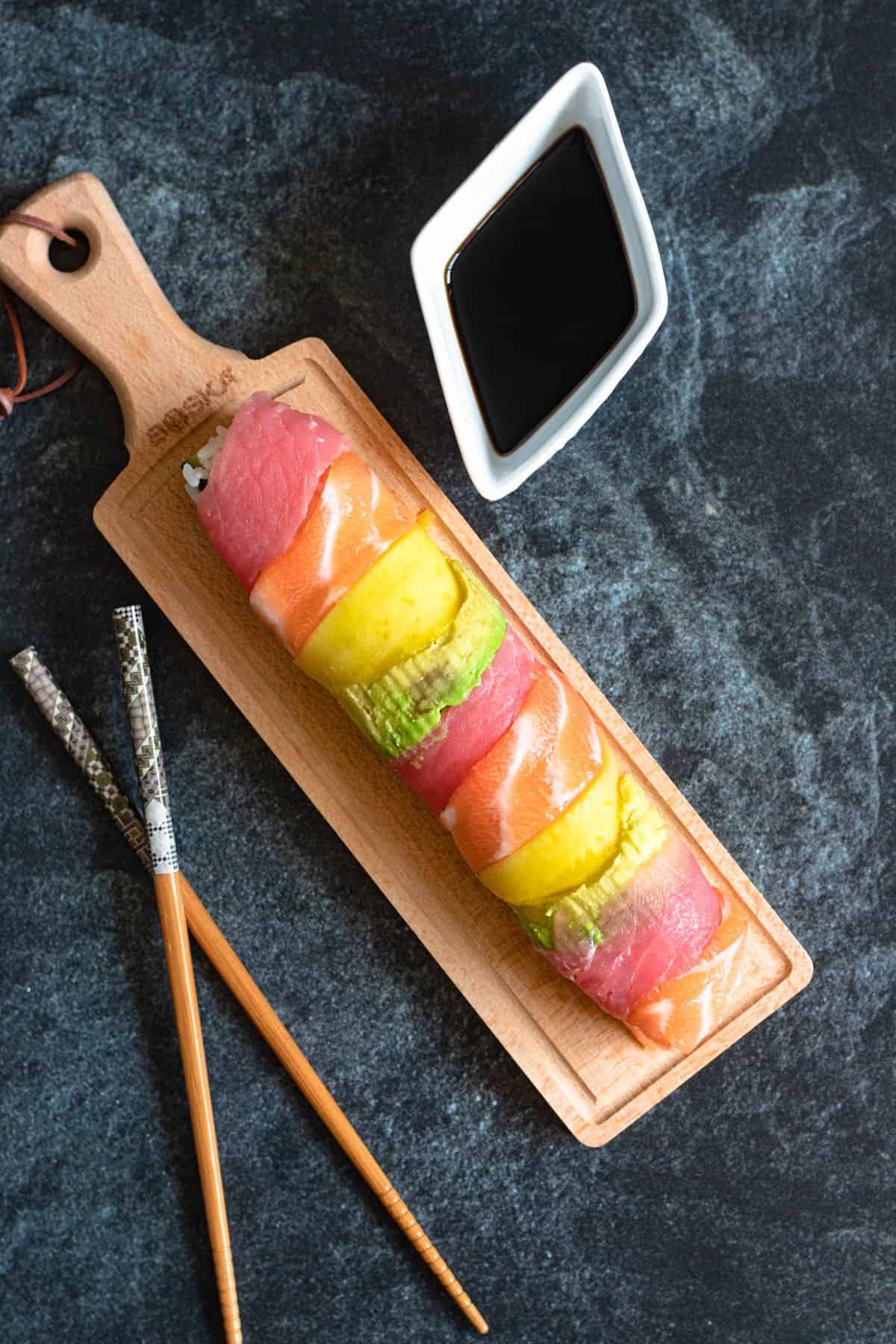
If you have ever looked at the menu at Japanese sushi restaurants and felt completely lost–you are not alone.
It turns out, there are many different types of sushi and there are also more dishes outside of sushi in Japanese cuisine that use raw fish!
Two categories you may see on sushi menus are sashimi and sushi. While these two may appear very similar from the photos and key ingredients, they are actually very different.
If you are faced with a decision of which to order, you don’t need to fear. Both are delicious Japanese specialties and with each, you will get a unique culinary experience. Both are perfect for sharing with friends or enjoying a romantic date night.
With a few additional tips on what makes each dish unique, you can order with confidence, knowing just what you are getting!
What is Sushi?
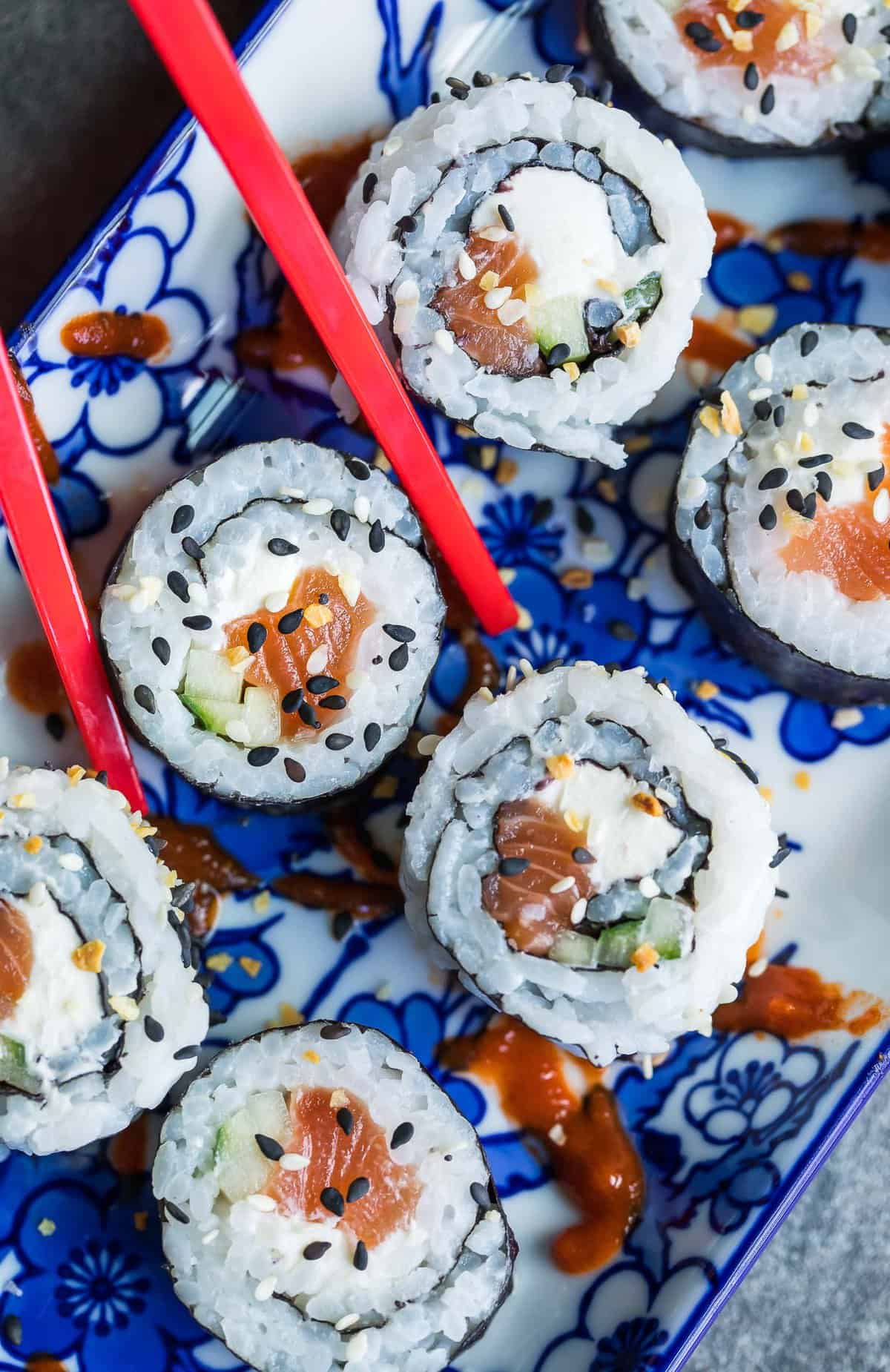
Sushi is a popular type of Japanese cuisine made with fish and seafood (raw or sometimes cooked) and wrapped along with vinegar rice and other ingredients. The exact ingredients inside a sushi roll can vary greatly but the one ingredient that is always consistent with traditional sushi is the rice. All sushi has rice.
Sushi rice is unique in flavor and texture. It is a short-grain white rice which makes it chewy and sticky rice, and then it is mixed with rice vinegar and a hint of sugar and salt. The result is vinegared rice that is a bit sour but is perfectly balanced by the other ingredients in the roll.
Sushi rolls do not have to contain raw fish or any meat at all to be considered sushi. Sushi may contain raw fish, cooked fish, tofu, or some rolls that can be made with just vegetables (like this Gobo Sushi!). The key to good sushi is all in the rice.
In order to be considered sushi, the dish must have bite-sized pieces of sushi rice along with other toppings and ingredients. There are several different types of sushi.
What is Sashimi?
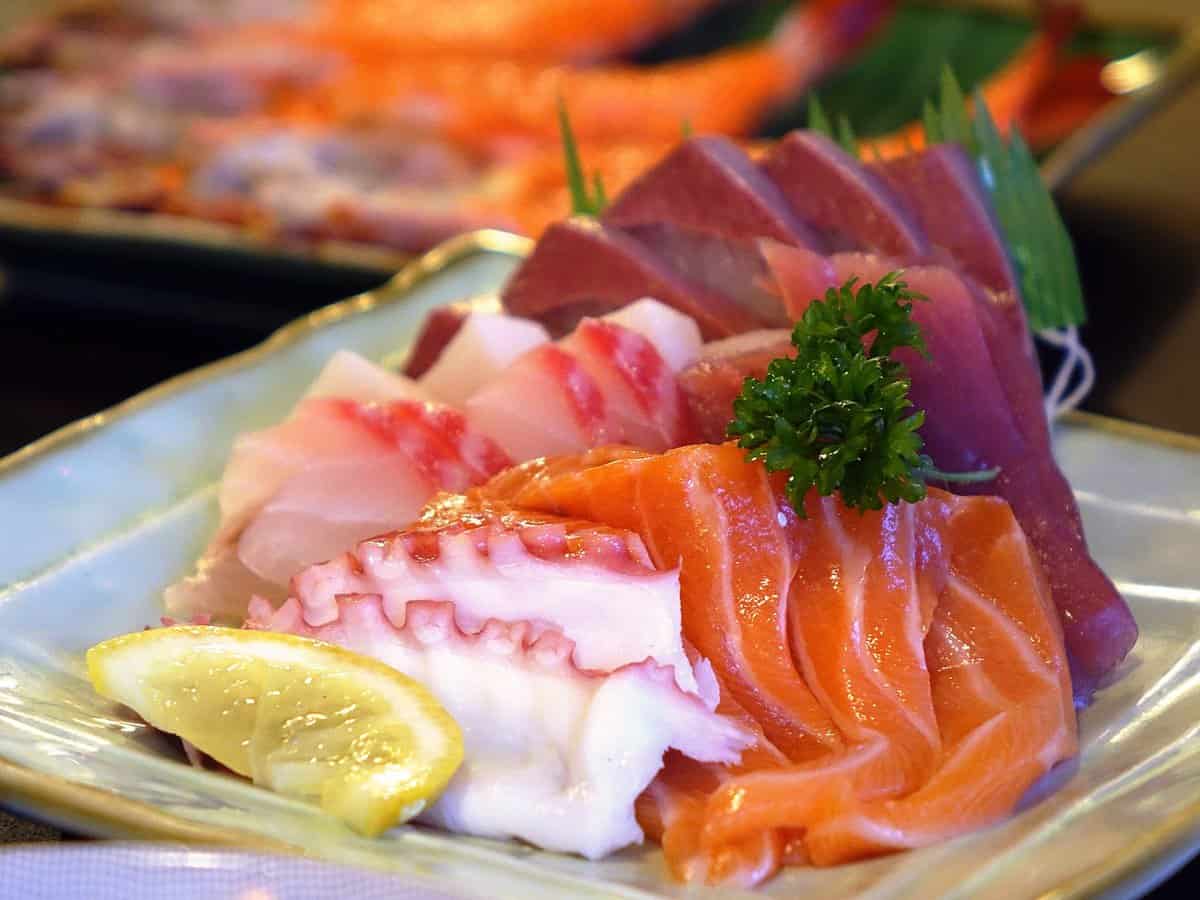
Sashimi, on the other hand, is all about the meat. In fact, sashimi is only raw meat.
Sashimi is thinly sliced raw fish or meat, served completely on its own with a side of soy sauce or wasabi.
Sashimi means “pierced body” in Japanese, which refers to the way the meat is cut and prepped for the dish. Only the highest-quality meat can be used for sashimi, to keep it safe to consume.
The most common ingredients for sashimi are fish and seafood, but beef, horse and deer can also be used for sashimi. Any meat that is used must be incredibly fresh to prevent bacteria from having the chance to grow.
Ingredients
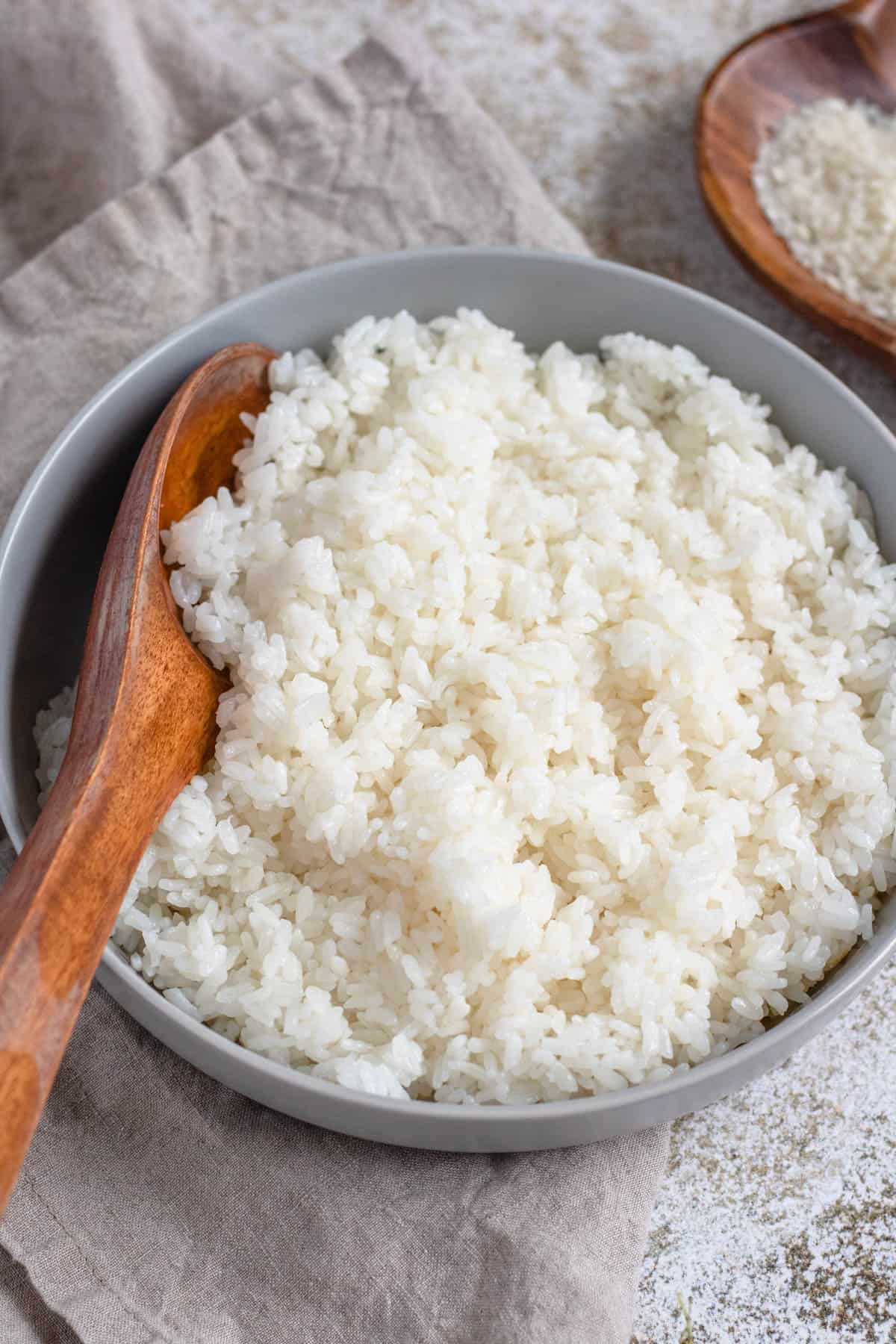
Of course, the main difference between sashimi and sushi is the rice, but there are other ingredients that differ as well.
Sushi may contain a wide variety of ingredients. The base is always rice, topped or rolled with fish, seafood, vegetables, sauce, and whatever else the chef has chosen to include.
You can find sushi made with raw tuna, salmon, eel, octopus, or yellowtail as well as cooked shrimp, crab, and tofu. Other ingredients may include cucumber, avocado, bamboo shoots, mango, cream cheese, carrot, seaweed (nori), sesame seeds, or jalapeno. The options are endless.
Sashimi is purer. Authentic sashimi is made with only the highest quality, fresh fish or meat.
Traditional sashimi is made from freshly caught saltwater fish, which tends to carry less bacteria and risk of parasites than farmed fish. Often it is caught on a single line, rather than a net to ensure sustainability, and it is put in ice right away to ensure freshness. It usually consists of salmon, tuna, squid, halibut, or yellowtail. Sashimi is very important to Japanese culture so even the process of how the fish is caught is very specific.
Sashimi is typically enjoyed with no seasoning or sauces, allowing you to taste the true flavor of the fish. Each fish has its own depth of flavor that shines through when it is served on its own.
Preparation
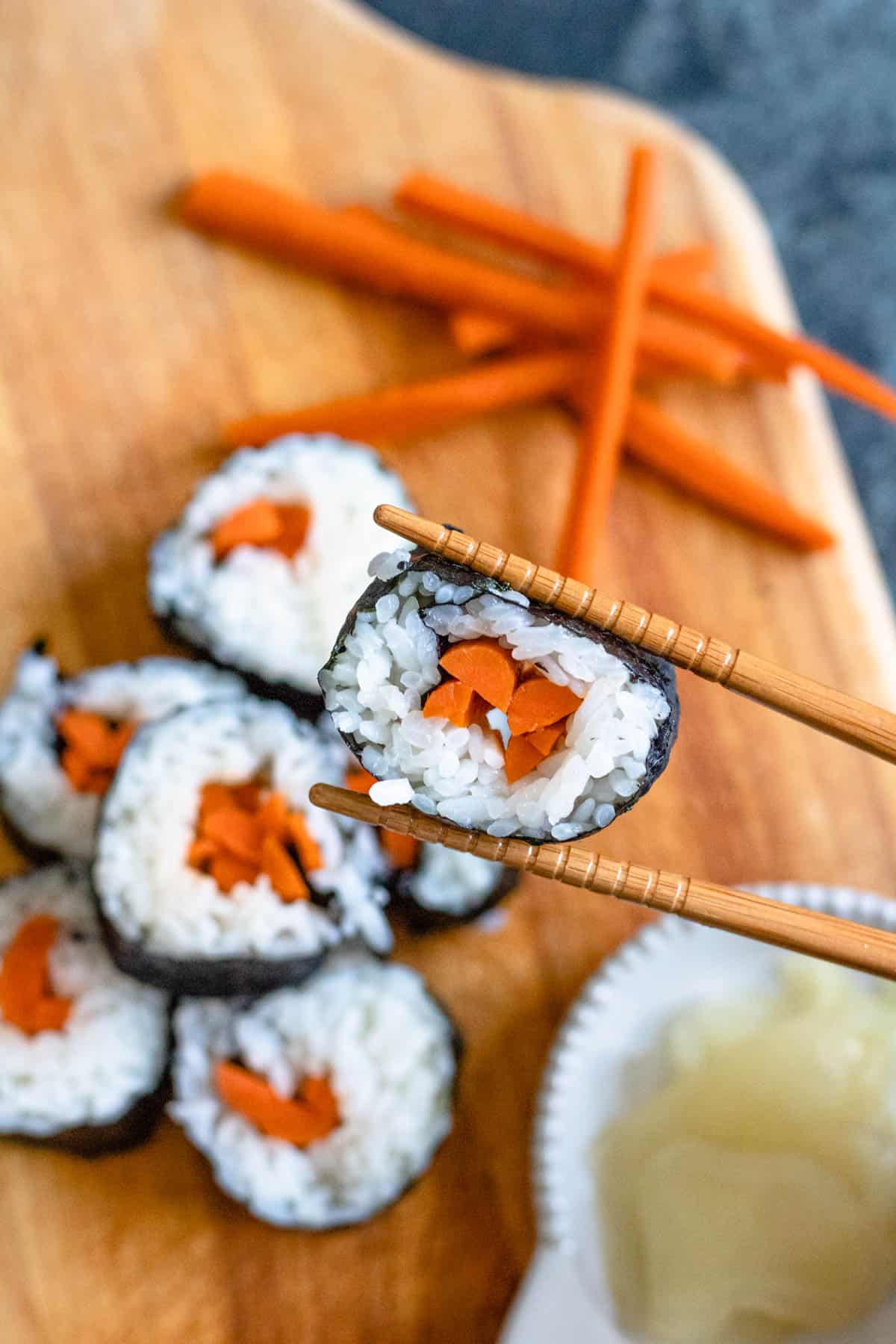
Sushi and Sashimi differ in preparation as well.
Sashimi is pure, thinly sliced fish. It has a natural flavor that shines all on its own and is meant to be savored.
Sushi is made with bite-sized pieces of rice either topped or rolled with other ingredients. Different types of sushi are prepared in different ways. The rice may be on the outside of the roll (like this Rainbow Roll Sushi Recipe), rolled inside the seaweed, or simply placed at the bottom of the bite. Sushi may or may not include nori seaweed.
Etiquette

These two dishes have different preparations and different textures makes eating them a bit different as well.
Sushi may be eaten with chopsticks or with fingers– though some may argue eating sushi with your fingers is improper. The seaweed on the exterior makes sushi easy to pick up, dip and enjoy.
Sashimi is raw fish, so it should only be eaten with chopsticks. True sashimi lovers will say it should not be dipped in any sauces so you can enjoy the true flavor of the fish.
When eating sashimi or sushi, you should be careful with your chopsticks as proper use of chopsticks is important table manners. Chopsticks should not be used to point at anything and should also not be poked into your rice. You should also not transfer a bite from your chopsticks to someone else’s chopsticks but you may use your chopsticks to transfer a piece to someone else’s plate.
Whether you are ordering takeout, dining at a fine restaurant, or making Japanese cuisine at home, sushi and sashimi are great dishes to add to your meal. Both can be eaten as appetizers or as a complete meal.
Is Sashimi or Sushi Healthier?
Sushi and sashimi can both be a part of a healthy diet when eaten in moderation. Fish is full of protein and healthy nutrients like omega-3 fatty acids and is low in calories.
Sashimi may be considered healthier than sushi by some because sushi is made with rice, which adds calories, fiber, and carbohydrates. The variety that sushi offers may be more fitting for different diets.
Sashimi is higher in protein and may be more filling than sushi. Most people eat more sushi in a sitting than sashimi simply because it does not have as much protein and doesn’t feel as filling.
Why are Sushi and Sashimi Safe to Eat?
The raw food in sushi or sashimi is perfectly safe to eat when it is prepared properly. It is important to use the freshest fish possible and to stick to saltwater fish because they are less likely to carry dangerous bacteria. Freshwater fish are more likely to carry harmful bacteria than the fresh seafood used for sushi or sashimi.
The Japanese people have developed an appreciation for raw fish over many centuries and they are experts on keeping the dish safe from bacteria.
Studies have shown that raw fish contains higher doses of important nutrients that may be cooked away when the fish is cooked.
That being said, sushi and sashimi are not recommended for anyone with a weakened immune system or anyone who is pregnant.
If you are concerned about eating raw fish but still want to enjoy some Japanese cuisine, you can use cooked fish or vegetables in your sushi. Crab and shrimp are often used in sushi and are cooked.
What are the Different Types of Sushi?
There are many different variations of sushi. Here is a brief description of each:
- Nigiri: Nigiri sushi is a bit of a combination between sushi and sashimi. It is very simply a piece of fish or raw seafood on top of a small ball of sushi rice. Nigiri may have a thin strip of seaweed holding the meat to the rice, but the flavor is focused on the raw fish with a hint of rice.
- Maki: Maki rolls are what most people picture when they think of sushi. It is rice, meat, and vegetables rolled into seaweed. Maki is the Japanese word for “rolled up”. Maki rolls are the most popular type of sushi. California rolls, which are a popular American sushi, would fall into this category. Maki is made by laying out a piece of nori on a bamboo sushi roller and putting a thin layer of sushi rice on top, then the vegetables and fillings. The seaweed is then rolled tightly and sliced into bite-sized pieces.
- Uramaki: Uramaki is the same as a maki roll but it begins with rice first so when the roll is rolled the rice ends up on the outside of the roll, rather than inside. It may also have sesame seeds sprinkled on the outside to make the roll easier to pick up without the rice sticking. This inside-out roll is an American invention, adding a bit of style and variation to the typical sushi roll but it is not as popular in Japan. Dragon Roll Sushi is a great example of a maki roll!
- Temaki: Temaki could be called temaki, temakizushi, or a hand roll. The hand roll is very similar to a maki roll, but it is rolled by hand, rather than the bamboo mat. When the roll is rolled by hand it often ends up in a cone shape, rather than a uniform roll. It is usually not sliced but eaten as a whole.
- Chirashi: Chirashi is a type of sushi that isn’t rolled at all. It is all the ingredients you might find in a sushi roll but offered in a bowl instead. Chirashi means scattered, referring to the way the ingredients are scattered in a bowl rather than wrapped up neatly. You may not find chirashi on many menus in the US but it is gaining popularity in Japan. There you can find Tokyo chirashi, made with raw fish, and Osaka-style chirashi made with fully cooked ingredients.
- Sushi Burrito: This is another type of sushi that you may not come across too often but it is out there. A sushi burrito is exactly what it sounds like. It is basically a burrito-sized sushi roll. Rice, vegetables, and meat are folded into large sheets of nori, creating sushi that can be held and enjoyed like a burrito.
What is the Best Sushi for Beginners?
If you have never tried sushi before, it may be helpful to start with a roll that has cooked fish to allow your palate to adjust to the new flavors.
The California roll is probably the most popular roll for beginners. It contains fully cooked crab, cucumber, and avocado. Some restaurants make a spicy California roll with a little sriracha or spicy tempura on top.
Another popular roll is a shrimp tempura roll. The shrimp are breaded and fried before being added to the roll along with some vegetables. Shrimp and crab should not be eaten raw. When they are in sushi, they are fully cooked so you should be able to feel comfortable eating them.
If you are nervous about any type of fish or seafood, a simple cucumber roll is a great place to start. Enjoy it with some soy sauce and a small amount of wasabi paste.
If you are an adventurous eater you should have no problem trying sushi or sashimi of any kind. It’s a good idea to share some with a friend so you can try a large variety without breaking the bank!
What is More Expensive, Sushi or Sashimi?
Sashimi is generally more expensive than sushi because it is made of pure, fresh, high-quality fish without any fillers. Traditionally the saltwater fish are caught by hand and delivered fresh as soon as possible. That kind of service and sustainability can be expensive.
It is necessary to use high-quality fish to achieve the best flavor and safety for sushi or sashimi.
It is important to remember that people tend to eat less sashimi in one sitting than sushi, so while sashimi may be more expensive, you will probably end up ordering and eating less of it and feeling just as full and satisfied.
What Is Sushi Vinegar?
Sushi vinegar is what makes sushi so delicious. It’s a simple combination of rice vinegar, salt, and sugar. These three ingredients make the sour rice sticky and flavorful and perfect for rolling up in a roll or forming into bite-sized mounds.
It’s easy to make your own sushi rice at home, with or without a rice cooker.




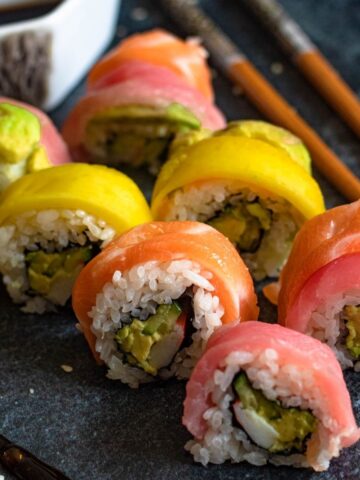
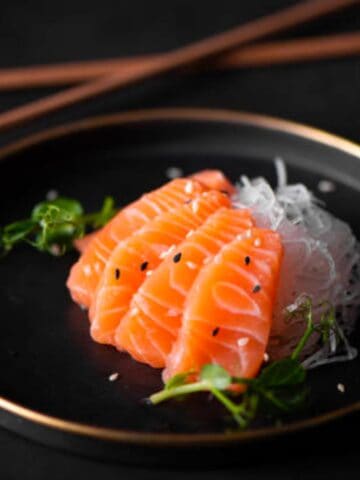
Leave a Reply